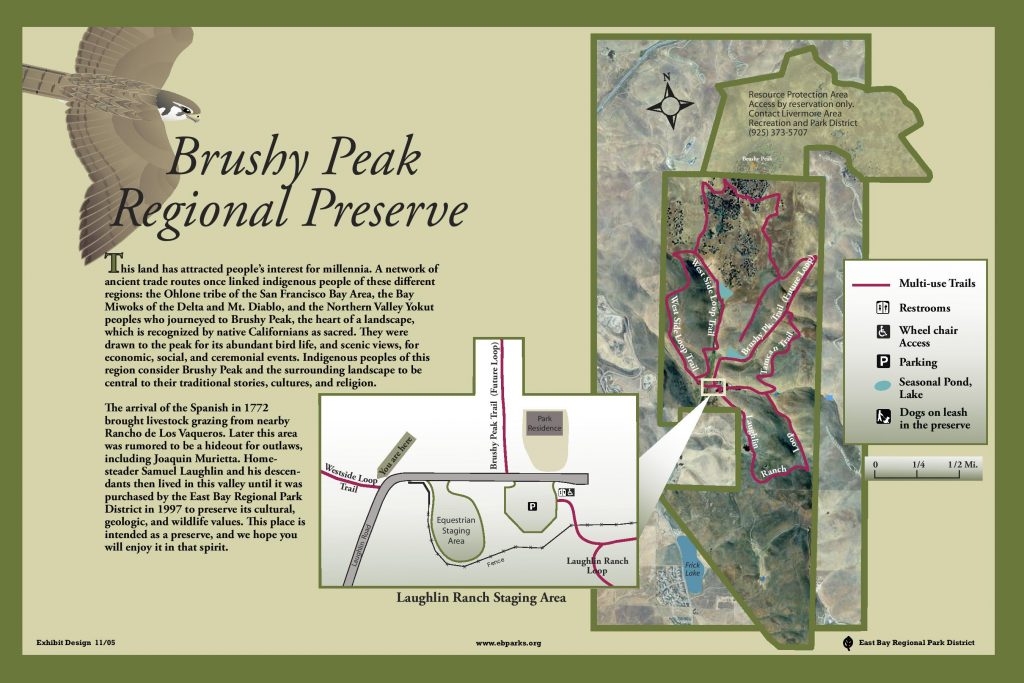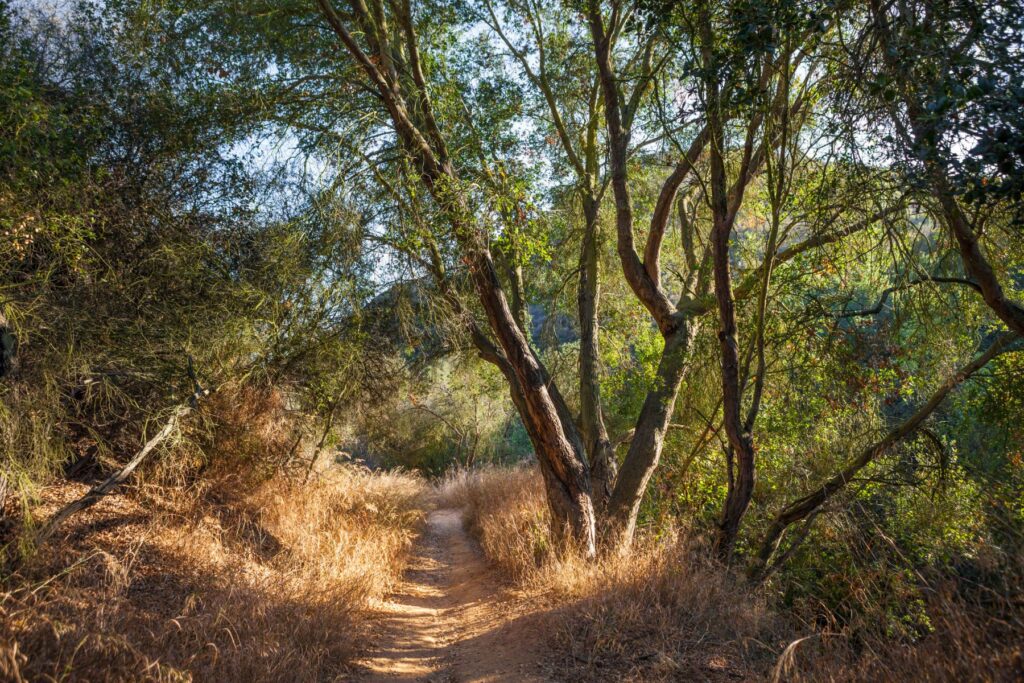So, you’re an outdoors enthusiast and you’re visiting the Livermore Valley. When’s the best time to visit Brushy Peak Regional Preserve? The better question is, when isn’t it! Brushy Peak is a 1,702-foot landmark at the juncture of the San Francisco Bay Area, the California Delta, and the Central Valley. Considered sacred by generations of native Californians, it’s now a beloved regional gem.
Native Californians and Brushy Peak History

Due to its geographical position, the Brushy Peak Regional Preserve area lies at the center of a network of ancient trade routes that linked Bay Area Ohlones, Bay Miwoks, and Northern Valley Yokuts, who were drawn to the area for economic, social, and ceremonial events.
During California\’s Gold Rush period, the rocky outcrops of Brushy Peak became retreats for bandits, and a favorite retreat of the legendary Mexican bandit Joaquin Murietta.
Between the 1890s and World War I, local ranch families held picnics and dances around the rock outcrops, and in 1900 and 1901 San Francisco\’s Bohemian Club held outings on the peak for prominent local citizens. Even a century ago, Brushy Peak was a natural gathering place for celebrating the regional beauty.
During the 1920s and 1930s Joseph Laughlin built farm buildings on the property, which are probably the remains of the buildings seen in the parkland today.
Brushy Peak’s journey to becoming the preserve we know it as today began with the Livermore Area Recreation and Park District (LARPD) in the 1970s.
Brushy Peak Regional Preserve Features
Spring, summer and fall are all excellent times to experience Brushy Peak Regional Preserve\’s wide variety of wildlife species, plant communities, and California annual grassland.
If you look closely or have the help of a volunteer, you’ll be able to spot native perennial grasses (purple needlegrass, creeping wildrye, etc.), which are sporadic and widely scattered; saltgrass is found in the alkali seasonal wetlands, such as in the main valley drainage within which the staging area lies.
Of course the stars of any plant community are the showy flowers. Common native wildflowers include the California buttercup, Johnny jump-up, lupine, blue-eyed grass, fiddlegrass, and many others. You can download a wildflower guide, in fact, to take with you when you hike.
Animals in the Park
And how about the fauna? The Reserve is home to the ground squirrel, whose burrows are inhabited by amphibians, reptiles, badgers, burrowing owls, and the San Joaquin kit fox.
Of course, birders will want to know about the park’s feathered features. Squirrels and cottontails are prey to red-tailed hawks, ferruginous hawks, and golden eagles. Western meadowlarks nest and feed in the grasslands, and fill the air with beautiful song. Sandstone rock outcrops provide nest sites for a variety of raptors and rock wrens.
The Woodlands
When you explore Brushy Peak’s Woodland habitats, you’ll see a range from pure stands of coast live oak and California buckeye to intermixed habitats of valley oak, bay laurel, and sagebrush. Shrubs include poison oak, monkeyflower, gooseberry, and elderberry.
The oak woodlands support deer, bobcats, rodents, and many bird species such as hummingbirds, cedar waxwings, orioles, robins, woodpeckers, and various raptors. Several spring-fed ponds, constructed by ranchers in the past, lie along the seasonally wet drainages and provide habitat for federally protected California red-legged frogs and the California tiger salamanders.
Other native amphibian species that breed in the ponds include the Western toad and Pacific tree frog. The Preserve\’s shrublands are dominated by the California sagebrush, with some bush monkeyflower. The south-facing slopes of Brushy Peak support this coastal sage plant community, which represents a habitat that typically supports the state and federally threatened Alameda whipsnake.
Park Activities
Brushy Peak offers great opportunities for hiking, biking, running, nature study, dog walking over the park\’s scenic trails.
You can search for events—the calendar for the Easy Bay Parks is always full!—on the reserve’s website.
You can also get details about the park’s many opportunities for outdoor activities and nature study under the activities tab on the website.
After a long day exploring the region, treat yourself to a spa treatment and a relaxing retreat at The Purple Orchid. Don’t forget to download our free area vacation guide to help you plan all aspects of your stay, from food to fun.

